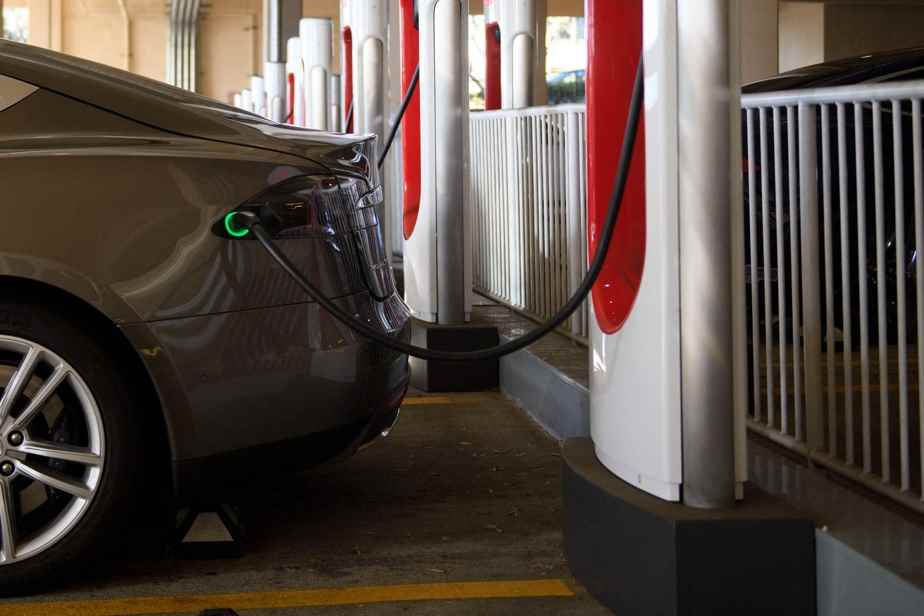(Los Angeles) Californians were ordered not to charge their electric cars on Wednesday, so as not to further burden an aging power grid, energized by a dreaded heat wave.
Posted at 6:29 p.m.
Last week, the state announced that it would ban the sale of new gasoline cars from 2035.
Temperatures reaching 44 degrees were expected in the suburbs of Los Angeles, as a heat dome towers over the American West.
The sweltering weather is expected to strain an already strained power grid, especially during the hottest hours, when air-conditioning systems — a staple in the United States — are running at full blast.
“Consumers are urged to reduce their energy use between 4 p.m. and 9 p.m., when the system is most energized, as demand remains high and there is less solar power available,” the statement said. American Public Power Association, an organization representing public utilities.
The three main recommended measures: set the thermostat to 25°C or more, avoid using large appliances and charging electric vehicles, and turning off unnecessary lights, the organization said.
Electricity is a sensitive subject for the State, whose infrastructure is dilapidated.
Electricity companies regularly ask households to limit their consumption during certain hours, when the solar panels stop producing electricity while the demand remains high, due to the heat.
But the call not to charge your electric car has been widely mocked on social networks, at a time when the state is promoting this type of vehicle.
“California just made electric vehicles mandatory AND asks residents not to charge them between 4 p.m. and 9 p.m.? “, quipped Republican Senator Tom Cotton on Twitter.
On Thursday, Californian authorities announced that new cars sold should be “zero emission” pollutants from 2035 at the latest.
The decision had been seen as a turning point for the electric car industry, with California representing an important automotive market and potentially influencing national or international standards.
“Dangerously Hot”
The US Weather Service (NWS) has issued an “excessive heat” warning for most of California, as well as parts of Arizona and Nevada.
“Dangerously hot temperatures are expected” until Sunday evening, warned the weather service, warning of the health risks posed by the heat wave.
“Those without access to adequate and reliable air conditioning and a source of hydration are most at risk, but a large part of the population is likely to suffer the effects. »
The night will bring little respite, with temperatures not dropping below 26°C in many places.
In southern California, heat waves are not unusual in September, but temperatures above 37°C are considered very hot, even for an area known for near-permanent sunshine.
This heat wave comes as large swathes of the south-west of the country have recently been hit by thunderstorms of rare intensity and torrential rains.
The desert Death Valley was inundated, and one person died after being swept away by a flood Friday in Utah’s Zion National Park, famous for its red rock cliffs and canyons.
Scientists have been warning for years about the impact of global warming, caused in particular by the use of fossil fuels and the emission of greenhouse gases, and which is now apparent to millions of people.
Heat waves are becoming more extreme, while storms that were once rare weather events are becoming more intense and more frequent.
